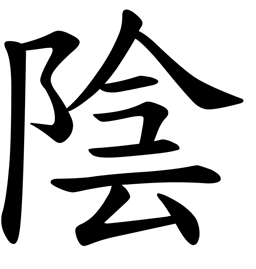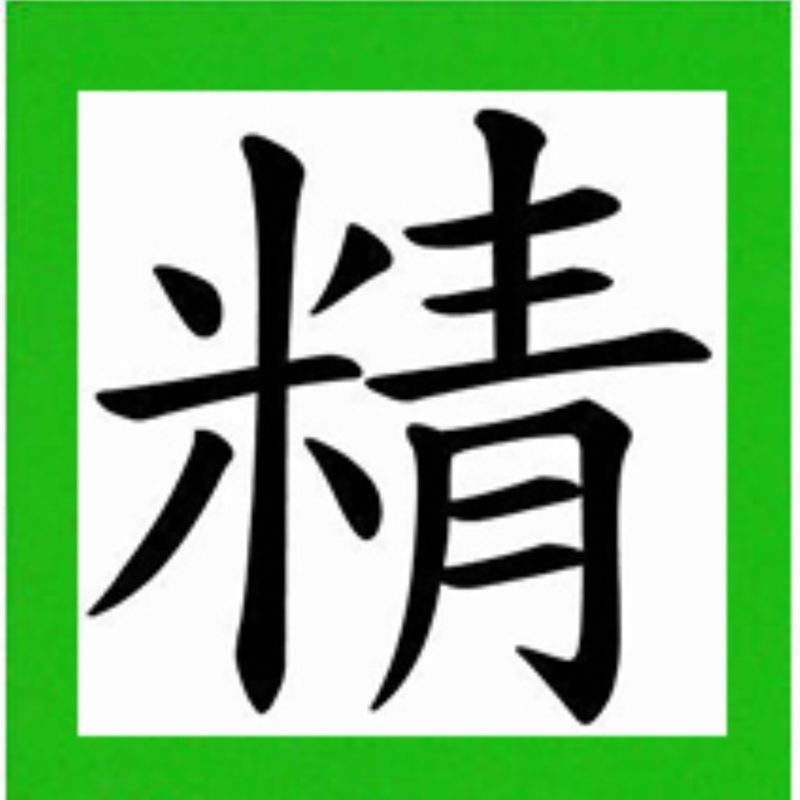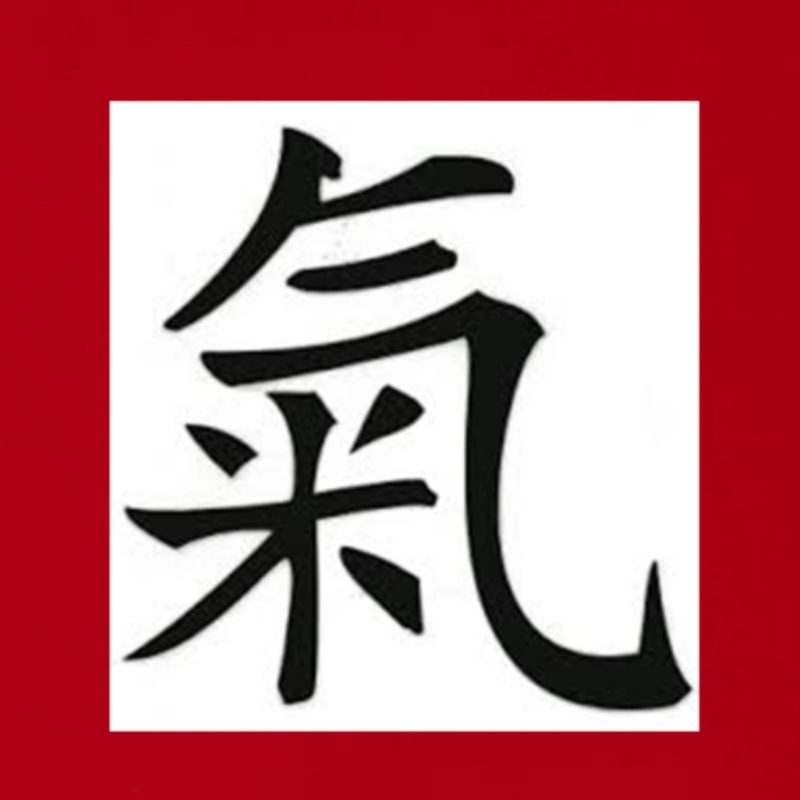 Ideogram Yin
Ideogram Yin  Ideogram Yang
Ideogram Yang
The radical on the left is the same for both ideograms and it represents a “HILL”
The radical on the right on the YIN ideogram represents a roof over the clouds. It represents the shadow, the dark, the cool, and together with the radical on the left, represents the dark side of the hill, the moon, the feminine, the negative pole. The radical on the right, in the Yang ideogram represents the Sun, a light on the horizon, it represents all about the world that is bright, illuminated, the sun, the masculine, the positive pole. The YIN and the YANG are the bases of everything: they are the LIFE ( the black Yin, the white Yang, the night Yin, the day Yang, the cold Yin, the heat Yang, the seasons: the winter YIN, the spring: the passage from YIN to YANG, the summer: Yang, the autumn: the passage from YANG to YIN, and so on…) Yin and Yang are interdependent upon each other and each of them contains in itself the root of the other ( white dot, black dot). They interact and one turns into the other mutually.
Even though YIN and Yang are opposites they are also interdependent upon each other: one cannot exist without the other. Each thing contains opposite forces that are mutually exclusive but also interdependent upon each other. The Day can come just at the end of the Night, there is no activity without rest, there is no energy without matter, no contraction without expansion. When the YIN is preponderant it induces a reduction of the YANG, that is that the excess of YIN consumes the YANG and vice versa.
When the YIN is weak the YANG appears to be in excess. When the YANG is weak the YING appears to be in excess.
Example: when you have fever, when the temperature goes up (hot) you get shaking chills, as if you were cold, and the Yin goes into the Yang; when you put an ice bag on your body after a while you experience a burning sensation, Yang enters the Yin. When the Yin is extreme it has to turn into Yang and vice versa. Each one is the origin of the other and it is the same for all that appears in the Universe.
 The sinusoidal line that dives them gives the idea of movement, dynamism and harmony between the two opposites. If we apply the law of transformation to the Human’s Health, we can say that when the Yin prevail to the Yang, you get a Yin illness, which will turn into Yang when reached itis maximum and vice versa: if the Yang prevail you will get a Yang illness that can become Yin.
The sinusoidal line that dives them gives the idea of movement, dynamism and harmony between the two opposites. If we apply the law of transformation to the Human’s Health, we can say that when the Yin prevail to the Yang, you get a Yin illness, which will turn into Yang when reached itis maximum and vice versa: if the Yang prevail you will get a Yang illness that can become Yin.
This can appear also on an emotional level: an excess of fear (YIN) can burst into rage (YANG). In the human body we find the Yang and the Ying: the Head is Yang, the feet are Yin, the belly bottom is Yin compared to the head, but it is Yang if compared to the feet, our knees are yang compared to the feet but Yin compared to the head and so on. The chest is yin and the back is yang. The organs are Yin and the innards are Yang. The function of the organs is yang and the structure of the organs is ying. It can be said that all that concerns the Traditional Chinese Medicine (his physiology, illness, diagnosis and treatment) is ascribable to the basic and theoretical theory of Yin and Yang.
Each physiological process and each symptom can be analysed through the Yin-Yang Theory.
So each way of treatment can be framed in one of the four following strategies:
Ton up the Yang, Ton up the Ying, eliminate the excess of Yang, eliminate the excess of Yin. Life is a continuous search for balance and health is the harmony between Yin and Yang, difficult to reach but achievable through various techniques, proposed by the Traditional Chinese Medicine: acupuncture, shiatsu (that I practice) and so on… And also through a correct diet based on the characteristic of each type of food and on the principles suggested by the Traditional Chinese Medicine.
Marco Mazzini Naturopath expert in Traditional Chinese Medicine





